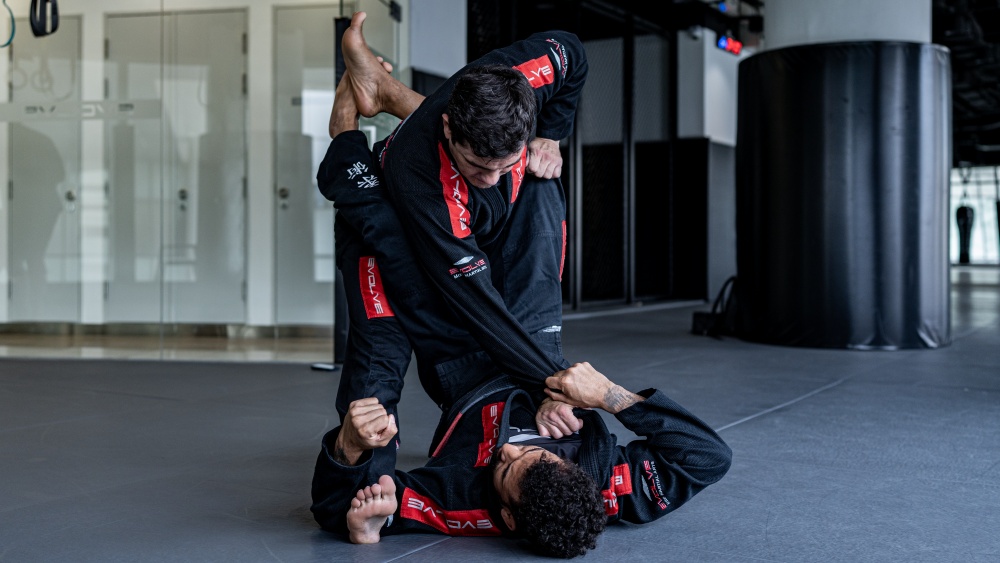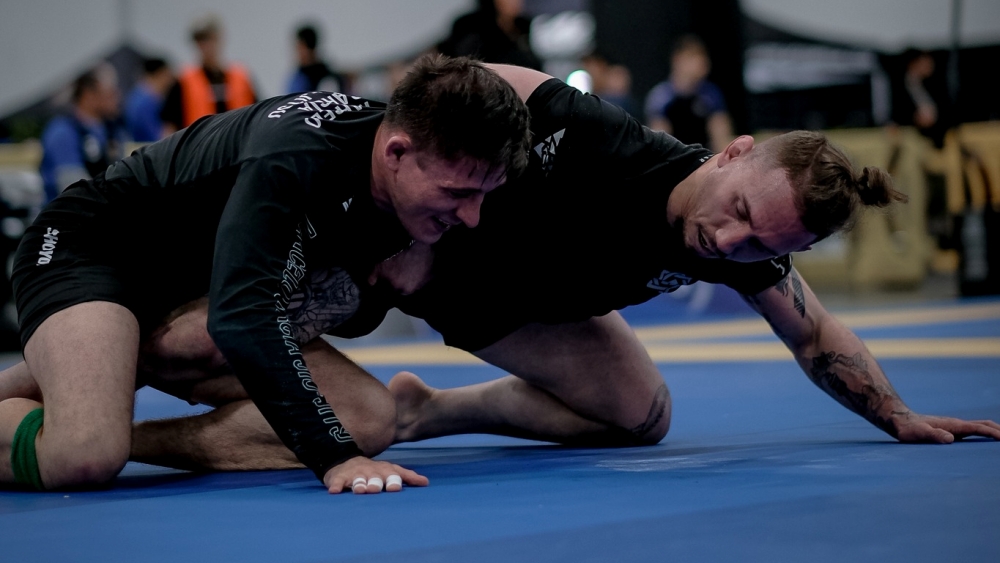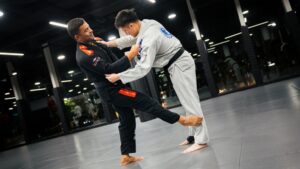One feature of Brazilian Jiu-Jitsu is that it is a martial art that emphasizes the guard. The guard is used as a defense to neutralize an opponent’s attempt to get a dominant position that can lead to submissions. What makes the guard useful is the fact that it can be an offensive position as well.
From the guard, you can utilize kuzushi to outbalance and sweep the opponent, allowing you to go on top. You can even transition to submissions as they go down if you want to get fancy. Learning sweeps is an integral part of guardwork and is recommended to learn even at the white belt level. The mechanics you’ll learn from sweeping techniques will help you drastically improve your bottom game.
Today, we will talk about one of the most basic sweeps in BJJ, the lumberjack sweep.
The Lumberjack Sweep
The closed guard is likely the first type of guard a beginner will learn in BJJ. It is a relatively basic yet powerful guard that can leave opponents trapped and restricted. Every grappler needs to know at least a few submissions and sweeps in the closed guard. The opponent will do whatever it takes to escape your guard, so it is best to attack them as they do this.
The lumberjack sweep from the closed guard is a very useful technique and can work up to the black belt level. It is typically used when your opponent decides to stand up from the closed guard.
As they stand up, apply a cross sleeve grip while your other hand underhooks their leg. You can keep your hips raised to maximize power while you sweep. Alternatively, you can drop your hip a little if you’re not flexible enough and use it to push in the direction of the opponent’s knee (the knee of the leg you are underhooking).
Matches start standing up. In training, you can ask your partner to start your roll in the closed guard, or in any position for that matter. But in competition, pulling guard from standing is perhaps the easiest way to get the closed guard at the onset. From there, you can apply the sweep shown in the video above.
Charles Negromonte and Kywan Gracie Behring of Roger Gracie Academy show the lumberjack sweep’s finer details. Starting from the stand up, jump into the closed guard, apply a cross sleeve grip, and underhook the opponent’s leg with your near arm. Most of the time, if the opponent has a good posture standing up, your head can barely touch the floor. When this happens, use your hips and grip to pull them down to break their posture.
Secure your underhook by putting their ankle near your biceps, as the opponent’s natural reaction would be to stand up and regain their posture. Turn your hip on top of the opponent’s knee while bridging up to sweep them.
Maintain your cross-sleeve grip and underhook after completing the sweep and keep your bridge up. The opponent can recover their posture and get back to the closed guard, so keep your hips elevated as much as possible.
Your hip bridge and the squeeze of your legs around the opponent’s waist will prevent them from coming up. Let go of your underhook, but maintain the sleeve grip and go up to the mount.
In this video, Lachlan Giles demonstrates another way to execute the lumberjack sweep. This approach is effective once your opponent stands up in a very squared stance. A squared stance is stable in some ways, but it is highly dangerous once you can access the feet. Don’t try this sweep when your guard is too close, though, as it does not give you the same leverage.
To start, open your guard, drop your hips, and place it near their center of gravity. Push and lift your hips as you straighten your legs to sweep the opponent while grabbing both ankles.
If the opponent is pressuring forward, lift them a little and pull their ankles.
When the opponent is about to fall down, quickly grab a cross collar grip and post your other hand on the mat as your hips scoot up past their hips, landing you on the mount. Not grabbing a cross collar grip and following up will result in a scramble, so please take note of this critical detail.
Chaining With Submissions
In BJJ, it is essential to secure the position before you attempt submissions. While some grapplers prefer and are more successful in applying submissions quickly, others prefer to completely dominate using pins first before attempting submissions. It is a part of your BJJ journey to understand what works best for you.
Some instances require quick decision-making, especially when the opponent fights hard to not give up a position. Take the lumberjack sweep as an example. After sweeping the opponent, a common reaction is that they will post their hand to your chest when you are about to go to the mount.
When that happens, even before securing the mount, you can go for an armbar by swinging your legs on top of the opponent’s posting hand and finish with a corkscrew armbar. If the opponent rolls, follow.

Using the same reaction of the opponent (posts on your chest), you can also apply a triangle. After the sweep, you can let go of the cross-sleeve grip and pass it to your other hand. As the opponent pushes you and comes up, you can shoot your legs up and go for a triangle.
Likewise, if the opponent regains their posture after the sweep and stands up, you can pass your cross-sleeve grip to your other hand and apply the three brothers’ submissions (armbar, triangle, and omoplata).
If you are an advanced grappler, you can apply a knee bar by maintaining the underhook as you drop your knee while your other foot posts on their hip at the same side of the underhook. Do a back roll while your hips come high as you rotate, and you should be able to get a nice knee bar from there.
Final Thoughts
Sweeps are a crucial part of grappling. Using sweeps allows you to stay offensive off your back and will give you the ability to transition to a more dominant position. Although it is absolutely better to play on top if possible, having a tricky guard will always help you become a more complete grappler.
You may also like:
















